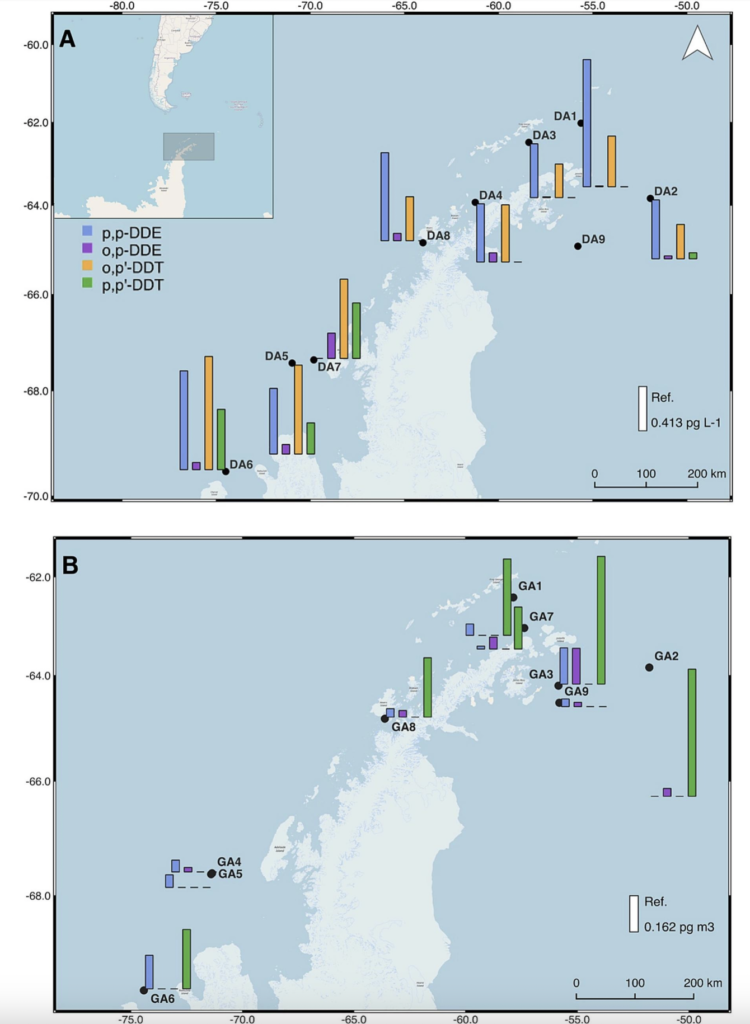Dichlorodiphenyltrichloroethane (DDT) and Dichlorodiphenyldichloroethylene (DDE) levels in air and surface sea waters along the Antarctic Peninsula

Persistent organic pollutants (POPs) are widespread worldwide, even reaching polar regions. Among POPs, dichlorodiphenyltrichloroethane (DDT) and their metabolites have been reported scarcely in the Antarctic environment. Here we report the levels of p,p′-DDT, o,p′-DDT, p,p′-DDE, and o,p′-DDE in air and water samples collected during austral summer 2009. The levels found ranged from 0.25 to 4.26 pg m−3 in the atmospheric samples while in the water samples ranged from 0.07 to 0.25 pg L−1. These concentrations were within the range of the reported concentrations in the last 20 years in Antarctica. However, the source ratio showed that most of p,p′-DDT comes from fresh applications and Dicofol formulations. The back-trajectories estimated for the air masses revealed that most of the p,p′-DDT came from the continental Antarctic peninsula and surrounding waters. The diffusive exchange direction showed that Antarctic surface waters are the final sink of the studied compounds during the survey period.
Manuscript could be downloaded here